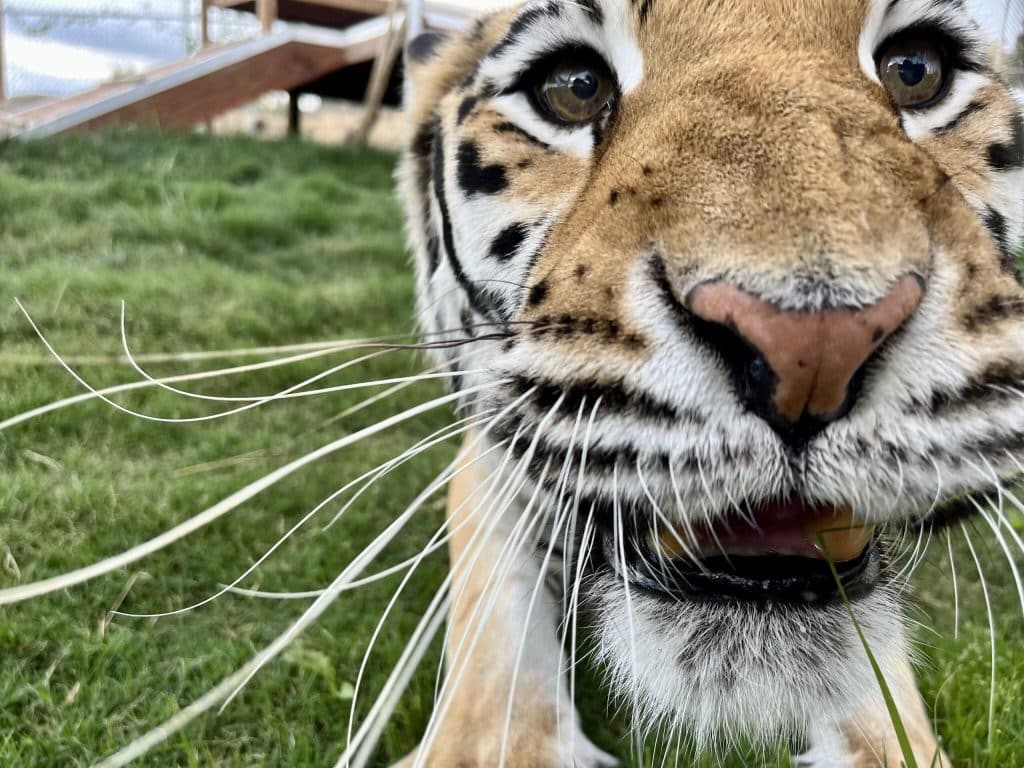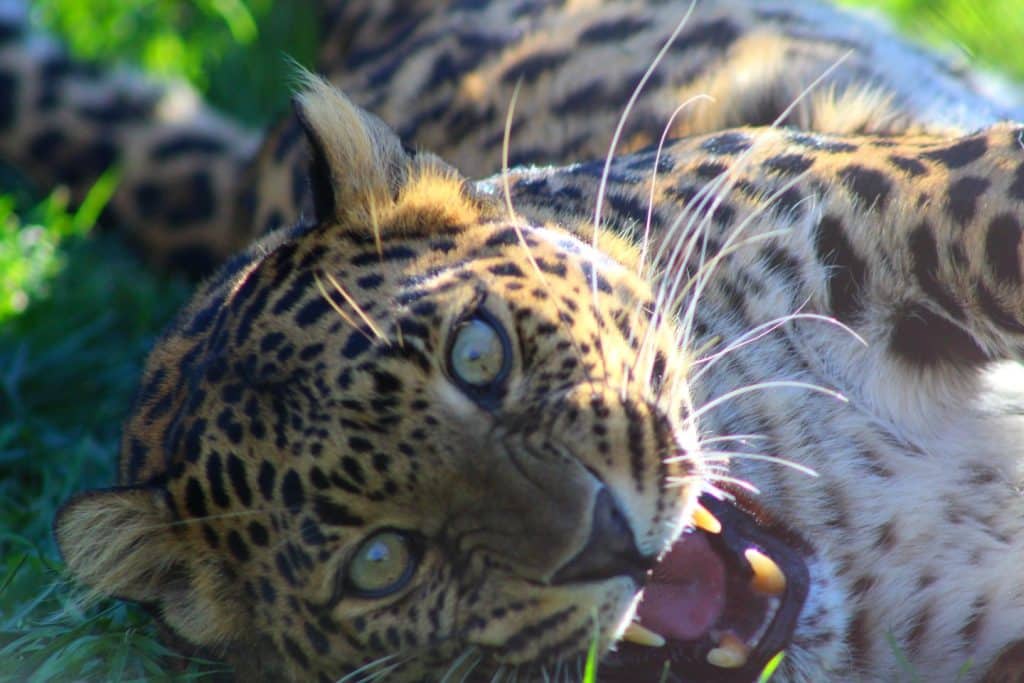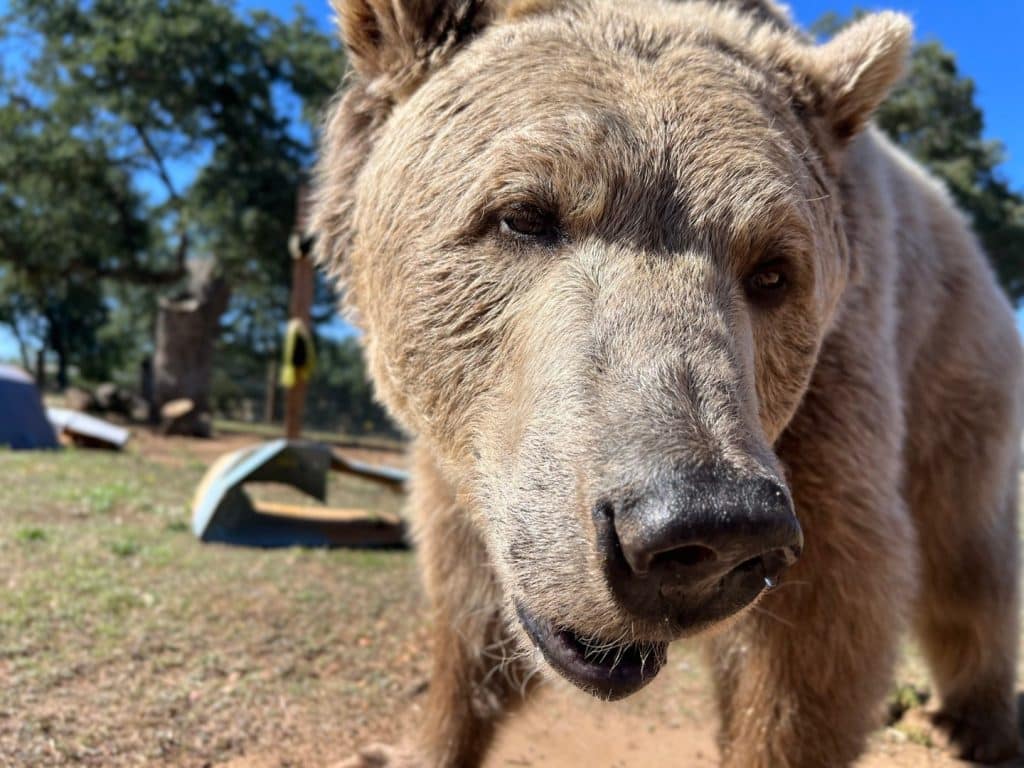

Whiskers are cute. They twitch when a cat’s curious, puff out when they’re annoyed, and give them that signature look we all adore. But beyond the charm and fluff, whiskers—especially on big cats—are powerful sensory organs that quite literally guide their way through the world. These special hairs, called vibrissae, are rooted deep in the skin and packed with nerve endings, acting like finely tuned radar systems that help wild animals navigate, hunt, and survive.
Let’s dive nose-first into the wild world of whiskers and uncover how these seemingly simple hairs play a life-saving role for lions, tigers, bobcats—and even animals you wouldn’t expect.
Vibrissae (vuh-briss-ee) are special hairs that grow in very specific areas—primarily around a cat’s upper lip, above the eyes, on the chin, and even on the back of the legs. And unlike ordinary fur, vibrissae are highly sensitive tactile sensors anchored three times deeper into the skin than ordinary fur. They’re surrounded by hair follicles loaded with touch-sensitive nerves and tiny blood-filled capsules called sinus complexes.
When the whisker moves, even slightly, it sends a signal through this nerve-dense hub to the brain, specifically to regions responsible for tactile perception and spatial awareness. It’s a bit like a satellite dish constantly feeding data to a control center.
The vibrissae on big cats, such as lions, tigers, and bobcats, are exceptionally long and incredibly powerful. These animal whiskers can grow up to five inches long, especially on large species, giving them a wide “sensing zone” around their face. That zone helps them detect movement, track air currents, and even judge the width of narrow spaces before taking a step forward.
The most remarkable aspect is that each whisker functions like an individual antenna. When something brushes up against them—or even shifts the air nearby—those messages get delivered straight to the brain via the infraorbital foramen, a little opening in the skull that bundles up all those sensitive nerves. It’s like plugging into the cat’s personal Wi-Fi of the world around them.
The better question might be: what don’t whiskers do?
From domestic cats lounging on windowsills to big cats stalking prey on the savanna, whiskers on cats serve several life-saving purposes:

Whiskers on cats naturally shed and regrow like other hairs. But cutting or damaging them disrupts a cat’s sense of reality.
When a whisker is cut, the tactile hair itself doesn’t feel pain (since it’s made of keratin, like our nails), but the loss impacts how the cat interprets its environment. It’s like being blindfolded in a crowded room—you’ll feel anxious, disoriented, maybe even panicked.
In captivity, whisker damage is sadly common. Cats living in cramped enclosures or under constant stress can break or lose whiskers due to trauma, rubbing, or overstimulation. This affects their survival instincts and can lead to abnormal behaviors, such as pacing, hiding, or acting aggressively.
At Lions Tigers & Bears (LTB), we often see rescued animals arrive with damaged vibrissae. Part of our mission in exotic animal rescue is to provide an environment where these animals can heal physically and emotionally—including regaining their sensory confidence. Our rehabilitation spaces are designed to encourage natural behaviors, restore safety, and protect delicate systems, such as whiskers.
It’s not just a cat thing—whiskers are surprisingly widespread across the animal kingdom.
Here are some non-feline whisker-havers you may not expect:
Each species’ whiskers are adapted to their lifestyle, but they all play a similar role: helping wild animals sense, survive, and thrive.

When it comes to impressive whisker length, size definitely matters, and the winners tend to be animals with a strong reliance on their sense of touch.
Here are the top three:
Believe it or not, whiskers on cats also function like mood rings.
At LTB, we pay close attention to cat sensory biology, using cues like whisker position to understand how an animal is feeling. It’s one more way we help build trust with the wild animals in our care.
So yes, whiskers are cute—but they’re also powerful tools for survival, communication, and healing. For big cats and domestic cats alike, vibrissae offer a window into the world around them and into their emotional state.Want to help big cat vibrissae do what they’re meant to do? Support our mission to protect animals from trauma, restore their senses, and give them a chance to feel the world again—one whisker twitch at a time.


Ph: 619.659.8078
Fx: 619.659.8841
[email protected]
24402 Martin Way, Alpine, CA 91901